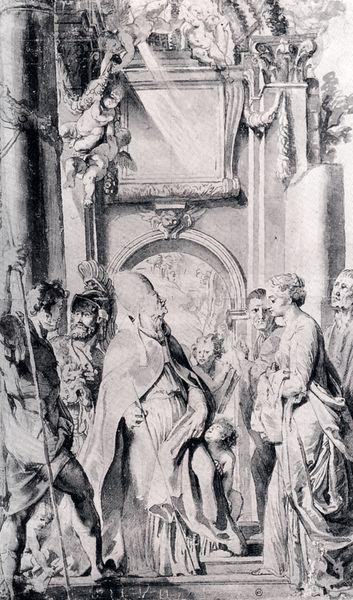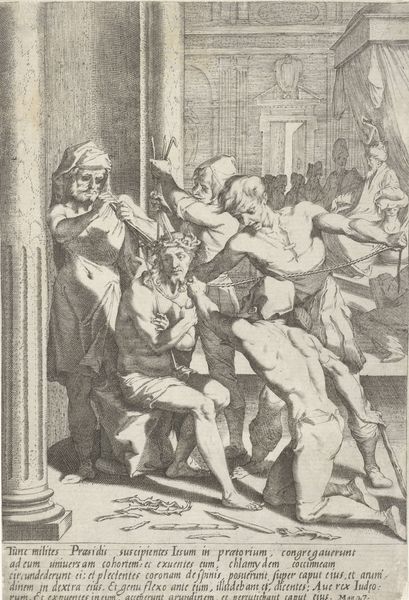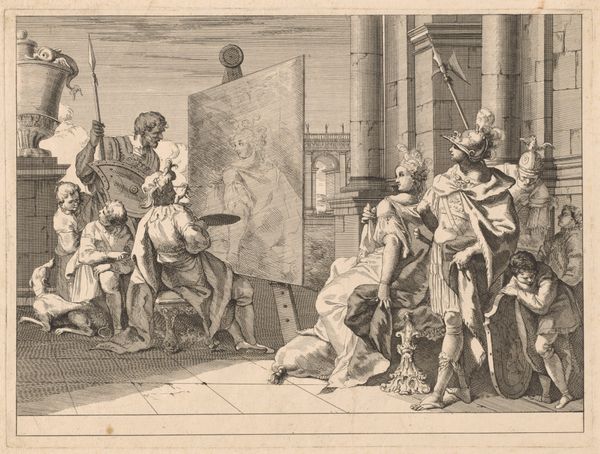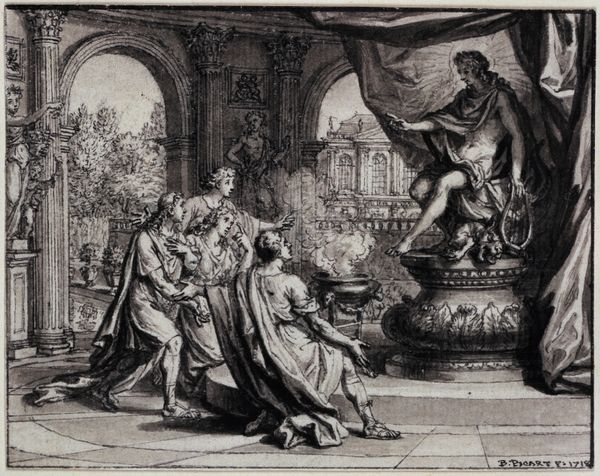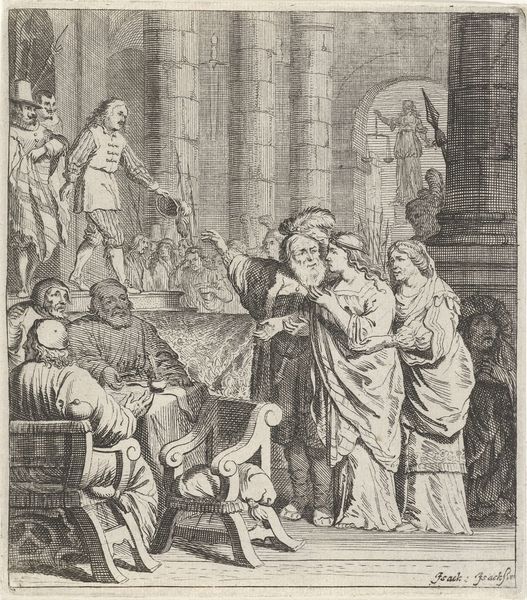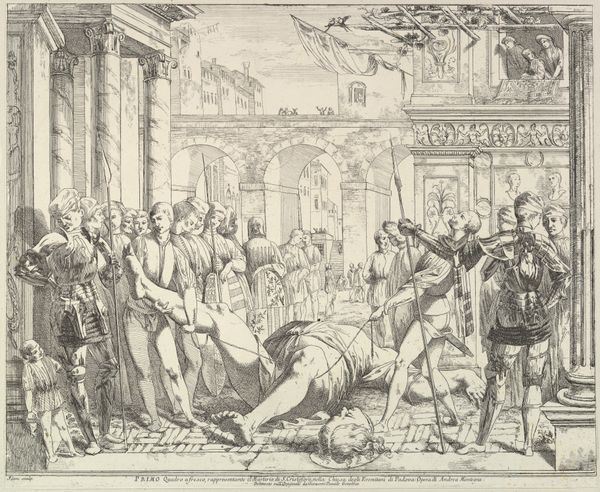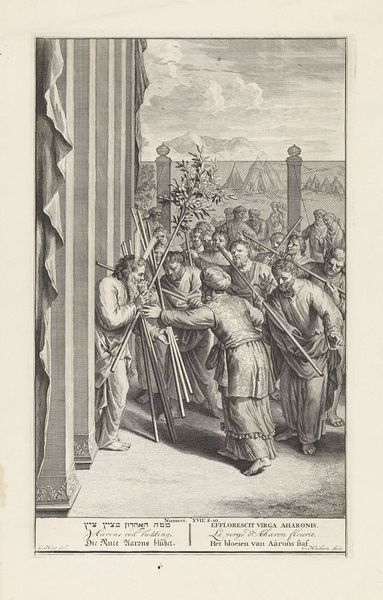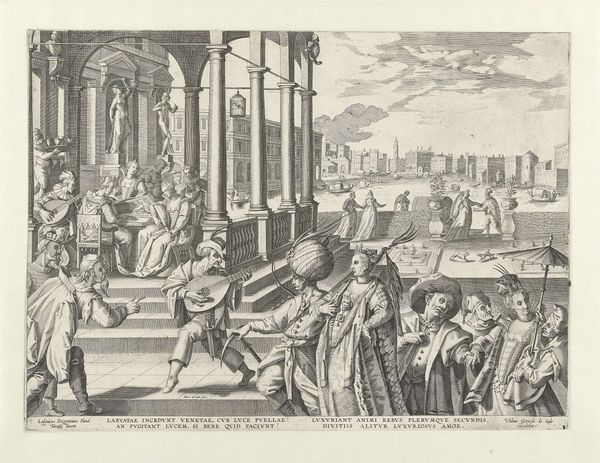
painting, fresco
#
narrative-art
#
painting
#
fresco
#
group-portraits
#
christianity
#
history-painting
#
italian-renaissance
Copyright: Public domain
Andrea Mantegna created this fresco, Scenes from the Life of St. Christopher, sometime in the second half of the fifteenth century. It presents a narrative moment, one with implications for the status of the church in the Italian Renaissance. Note the classical architecture, with its columns and arches. Mantegna consciously presents this Biblical scene in the context of the institutions of the Renaissance, subtly blending secular and religious power. The figures in the foreground are members of a local militia. They kneel before St. Christopher, receiving his blessing. This visual association would have resonated with the viewers in Mantua. As art historians, we can research the nature of religious patronage at this time. We might ask, what was the nature of the relationship between the church and the state? And how did artists like Mantegna work to both challenge and reinforce that relationship? This fresco demonstrates the complex social function of art, and the questions of social, cultural, and institutional history that it provokes.
Comments
No comments
Be the first to comment and join the conversation on the ultimate creative platform.



